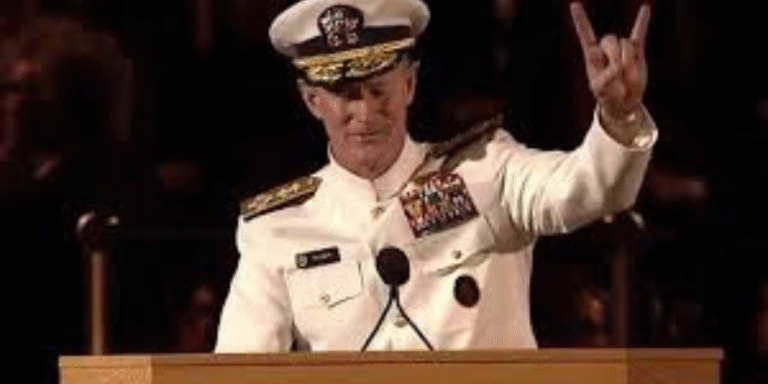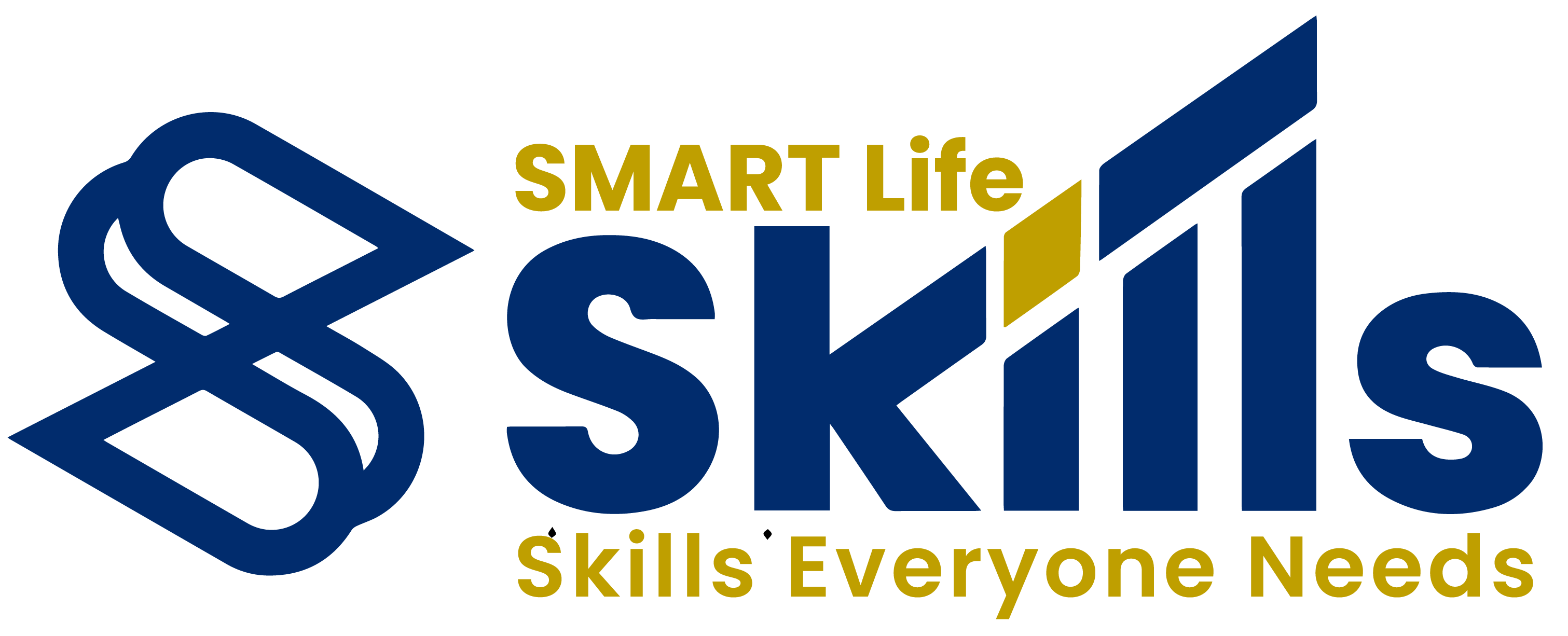On 17 May 2014, Admiral William H. McRaven, a retired United States Navy SEAL with 36 years of distinguished military service, delivered a commencement address at the University of Texas that quickly gained global recognition. With a single sentence, “If you want to change the world, start off by making your bed,” McRaven captured the attention of millions (McRaven, 2014).
Drawing upon the brutal training and high-stakes operations that define SEAL life, McRaven offered ten simple yet profound lessons. These lessons—originally intended for Navy personnel—have found universal application in fields ranging from education to corporate leadership, and from personal development to crisis management (Reeves, 1997; Roy and Lawson, 2015).
🎓 The Mathematics of Impact
McRaven began with a numerical challenge: If each person changes the lives of just ten others, and each of those ten influences another ten, within five generations over 800 million lives would be impacted. By the sixth generation, that number reaches eight billion—the current global population. The ripple effect of leadership and positive change, he argued, starts with consistent, purposeful actions (McRaven, 2017; Divine and Machate, 2013).
🛏️ 1.0 Make Your Bed: Start with Small Wins
SEAL cadets begin their day by meticulously making their beds—tight sheets, square corners, and centred pillows. It’s not just about cleanliness; it instils discipline, structure, and a sense of achievement. Psychological studies in behavioural activation suggest that accomplishing small, repeatable tasks enhances motivation and lowers stress (Peterson, 2009). McRaven (2017) argues that starting your day with a small success sets the tone for larger accomplishments.
“If you make your bed every morning, you will have accomplished the first task of the day… it will encourage you to do another task, and another.” (McRaven, 2014)
🚣 2.0 You Can’t Paddle Alone: Find a Team
In SEAL training, candidates operate in boat crews, where success depends on synchronised paddling. If one person fails to cooperate, the whole boat suffers. Similarly, leadership studies emphasise the significance of collaboration and interdependence for complex problem-solving (Milligan, 2021). McRaven reminds us: no great mission is ever completed solo.
👟 3.0 Character Over Appearance: Measure by the Heart
One of the best-performing teams in McRaven’s training was composed of men all under 5’5”. They were dismissed as “munchkins” but proved to be the strongest and most determined. This story underscores research in leadership diversity, which shows that grit and perseverance often outperform superficial traits (Fraser, 2016; Hicks, 2018).
🧂 4.0 Get Over Being a Sugar Cookie: Embrace Unfairness
The infamous “sugar cookie” punishment—rolling in wet sand and enduring a full day of discomfort—was often handed out arbitrarily. McRaven notes this as a metaphor for life: fairness is not guaranteed. Success requires perseverance through injustice. Boykin (2022) supports this with findings on “controlled adversity” in leadership development, showing that leaders who face hardship become more adaptive.
💪 5.0 Embrace the Circus: Use Setbacks as Strength
Failing to meet performance standards meant extra training—known as “the circus.” Rather than punishment, McRaven describes it as a crucible for growth. Leadership development literature supports the value of “deliberate discomfort” in building resilience (Crowell, 2015). Leaders forged under pressure become more emotionally agile and confident.
🪂 6.0 Slide Down Head‑First: Take Bold Risks
Breaking tradition, one SEAL trainee shattered a time record by sliding head-first down an obstacle course rope. The message is clear: bold thinking and calculated risk-taking often yield breakthroughs. According to Roy and Lawson (2015), modern leaders must increasingly embrace risk to innovate in volatile environments.
🦈 7.0 Don’t Back Down from Sharks: Face Your Fears
During night dives in shark-infested waters, trainees were told: if a shark approaches, stand your ground. In life, adversaries come in many forms—whether personal, professional, or ideological. McEwen and Miniter (2014) describe how psychological toughness and threat management training in the SEALs equips leaders to face uncertainty with courage.
🛥️ 8.0 Be Steady in the Dark: Stay Calm in Chaos
Underwater operations beneath ships—where visibility is nil and oxygen is scarce—mirror the ambiguity and stress of real-world leadership crises. Remaining calm in the face of the unknown is vital. Reeves (1997) affirms this by highlighting the SEAL emphasis on mental rehearsal and visualisation techniques under extreme stress.
🚨 9.0 Sing in the Mud: Inspire Others During Hardship
In the lowest moments of training—15 hours submerged in cold mud—hope emerged through song. One cadet’s decision to sing uplifted the group. As McRaven recounts, leadership is not always about command; it’s often about hope (Jackson, 2020). Optimism is a strategic tool—especially in collective suffering.
🔔 10.0 Never Ring the Bell: Never Give Up
The brass bell at the training compound offers easy escape. Ringing it means quitting. But with it, you forfeit growth, mission, and legacy. McRaven (2017) challenges us all: do not ring the bell. Perseverance—even when the outcome is uncertain—is the backbone of transformation.
🧭 Final Thoughts
McRaven’s speech endures not because of its military lore, but because it offers a universal roadmap for navigating life’s hardships. Whether leading a team, enduring personal challenges, or influencing others, the principles of preparation, grit, humility, and hope remain vital.
The power of this message has been reinforced by scholars, veterans, and corporate leaders alike (Divine and Machate, 2013; Roy and Lawson, 2015; Boykin, 2022). In a world overwhelmed by complexity, Admiral McRaven invites us to return to simplicity.
Begin with a made bed. Inspire others. Stay resilient. Never give up.
✅ Key Takeaways
Start with a win: Make your bed.
Success is shared: Build a team.
Character matters: Not appearance.
Fairness is a myth: Persist anyway.
Setbacks strengthen: Embrace the “circus”.
Innovation is brave: Slide head-first.
Face adversity: Don’t run from sharks.
Lead in darkness: Be calm in crisis.
Bring hope: Especially when others despair.
Never quit: Don’t ring the bell.
📚 References
Boykin, J. (2022). Building Resilient Leaders. Marine Corps Gazette. Available at: http://www.mca-marines.org/wp-content/uploads/Building-Resilient-Leaders.pdf [Accessed 7 Jul. 2025].
Crowell, F.S. (2015). Navy SEALs Gone Wild: Publicity, Fame, and the Loss of the Quiet Professional. Naval Postgraduate School. Available at: https://calhoun.nps.edu/handle/10945/47927 [Accessed 7 Jul. 2025].
Divine, M. and Machate, A.E. (2013). The Way of the SEAL: Think Like an Elite Warrior to Lead and Succeed. New York: Reader’s Digest.
Fraser, P.A. (2016). Damn the Torpedoes!: Applying the Navy’s Leadership Principles to Business. New York: Morgan James Publishing.
Hicks, J.M. (2018). Does Navy SEAL Training Have an Impact on Civilian Life? ProQuest Dissertations Publishing. Available at: https://search.proquest.com [Accessed 7 Jul. 2025].
Jackson, J.E. (2020). Reflections on Reading. Naval War College Review, 73(3), pp.102–108. Available at: https://digital-commons.usnwc.edu/nwc-review/vol73/iss3/7 [Accessed 7 Jul. 2025].
McEwen, S. and Miniter, R. (2014). Eyes on Target: Inside Stories from the Brotherhood of the US Navy SEALs. New York: Center Street.
McRaven, W.H. (2014). University of Texas at Austin 2014 Commencement Address. [online] Available at: https://www.youtube.com/watch?v=pxBQLFLei70 [Accessed 7 Jul. 2025].
McRaven, W.H. (2017). Make Your Bed: Little Things That Can Change Your Life…And Maybe the World. London: Michael Joseph.
Milligan, B.H. (2021). By Water Beneath the Walls: The Rise of the Navy SEALs. New York: Bantam.
Peterson, E. (2009). The Strategic Utility of US Navy SEALs. Naval Postgraduate School. Available at: https://calhoun.nps.edu/handle/10945/4684 [Accessed 7 Jul. 2025].
Reeves, B.W. (1997). Navy SEALs: Theory vs. Reality. Naval Postgraduate School. Available at: https://calhoun.nps.edu/handle/10945/8728 [Accessed 7 Jul. 2025].
Roy, R. and Lawson, C. (2015). The Navy SEAL Art of War: Leadership Lessons from the World’s Most Elite Fighting Force. New York: Crown Business.









